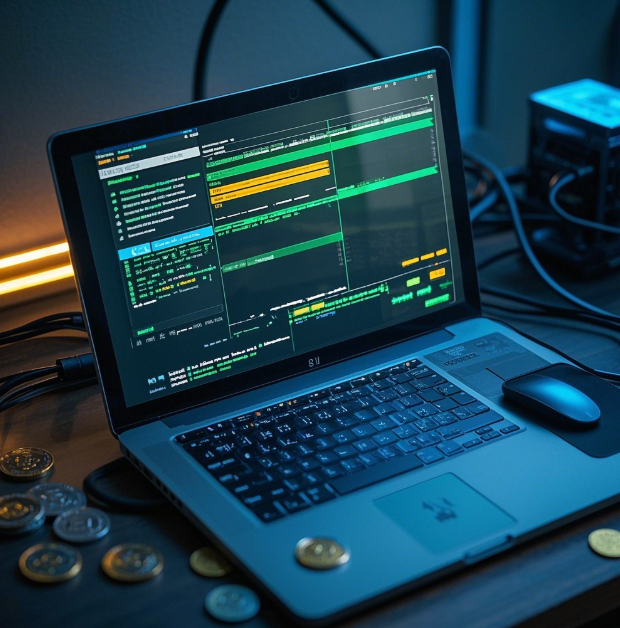In 2024, a major headline shocked the crypto world: a top-tier centralized exchange (CEX) imploded overnight, vaporizing billions in user funds. The reason was simple—users' assets were held in the exchange's custody, and the platform secretly used them for leveraged trading until ever
ything blew up. But in the same year, a decentralized exchange (DEX) was hacked, yet users lost nothing. Why? Because the hackers discovered there was no central "money vault" to raid!
This is the core philosophy of DEXs—the "no custody" trading model. Today, let's break down how this revolutionary approach, which turns exchanges into mere "middleware service providers," actually safeguards your assets.
1. The Wallet Revolution: Your Coins, Always in Your Pocket
The Fatal Flaw of CEXs
Anyone who's used Binance or Coinbase knows the drill: to trade, you must first deposit funds into the exchange's wallet. This is like handing cash to a stranger and praying they don’t spend it. Reality is harsh:
A hacker’s dream target: One breach of the exchange’s database, and all user assets are exposed.
The exchange’s piggy bank: Misusing user funds for leverage or market-making shenanigans is an open secret in the industry.
How DEXs Fix This
DEXs flip the script: "Hands off my money!" You simply connect a wallet like MetaMask—no private key sharing, no depositing coins. Even if the DEX’s frontend goes down, your assets remain safely in your on-chain wallet. Real-world example:
In 2024, a CEX went offline for maintenance for three days, leaving users stranded during a market surge.
Meanwhile, when Uniswap’s servers crashed, users still executed $120M in ETH trades directly via their wallets.
Golden rule: Your keys, your coins; not your keys, not your coins.
2. Smart Contracts: Code as the Referee, No Cheating Allowed
The crown jewel of DEXs is smart contracts. Think of them as robotic judges that enforce trading rules through immutable code:
No middlemen skimming profits: CEXs rely on manual order matching and settlement; DEXs automate it with "if bid ≥ ask, execute trade."
Real-time settlement: Every trade is verified on-chain—payment and delivery happen simultaneously, eliminating withdrawal delays.
But the system isn’t invincible. Three critical safeguards:
Bulletproof code: Top DEXs like Uniswap undergo 6-month audits by 20+ firms before launch.
Fail-safes: Major upgrades require community voting + 72-hour timelocks to prevent accidents.
Anti-attack measures: Contracts auto-pause trading during extreme volatility to thwart flash loan attacks.
Industry reports show audited DEXs score ~9/10 for security, while CEXs average just 6/10.

3. Transparency: Everything Happens in Broad Daylight
On-Chain Accountability
On CEXs, you can’t verify trading volumes. On DEXs:
Every trade is public: Transaction hashes are permanently recorded; fake volume is instantly exposed.
Liquidity pools are visible: You can audit pool reserves and LP earnings in real time.
Security Through Exposure
DEXs weaponize transparency:
MEV protection: Bundled transactions prevent front-running bots.
Scam s: Wallets like MetaMask flag malicious contracts automatically.
Ironically, stolen funds are harder to launder—every move is tracked on-chain.
4. Unstoppable by Design
Censorship-Resistant
Unlike CEXs that can freeze accounts, DEXs:
Run on global nodes: Even if one country bans them, users access via IPFS.
Live forever: Trading logic is embedded in blockchain code; as long as nodes exist, the platform survives.
Regulatory Jiu-Jitsu
Modern DEXs adapt smartly:
Tiered accounts: Platforms like dYdX offer KYC-compliant options without sacrificing decentralization.
Unfreezable assets: When a government tried seizing a DEX’s funds in 2024, they found no central vault—just user-owned wallets.
5. DEXs Aren’t Perfect (Here’s How to Stay Safe)
Despite their strengths, pitfalls exist:
Smart contract risks: A 2023 exploit drained $8M from a poorly audited DEX.
Phishing fronts: Fake Uniswap sites trick users into approving malicious transactions.
Self-custody responsibility: 73% of losses stem from users mishandling seed phrases.
Survival guide:
Use hardware wallets (e.g., Ledger) for large holdings.
Stick to CertiK-audited platforms.
Regularly revoke unused token approvals.
Satoshi’s mantra—"Don’t trust, verify"—is embodied by DEXs. They replace blind trust in institutions with cryptographic guarantees. As Vitalik says: "True decentralization shifts power from few to code."
With ZK-proofs and Layer2 scaling, DEXs will keep getting faster. But for users, the principle remains simple: Where your coins are, your security is.


















No comments yet